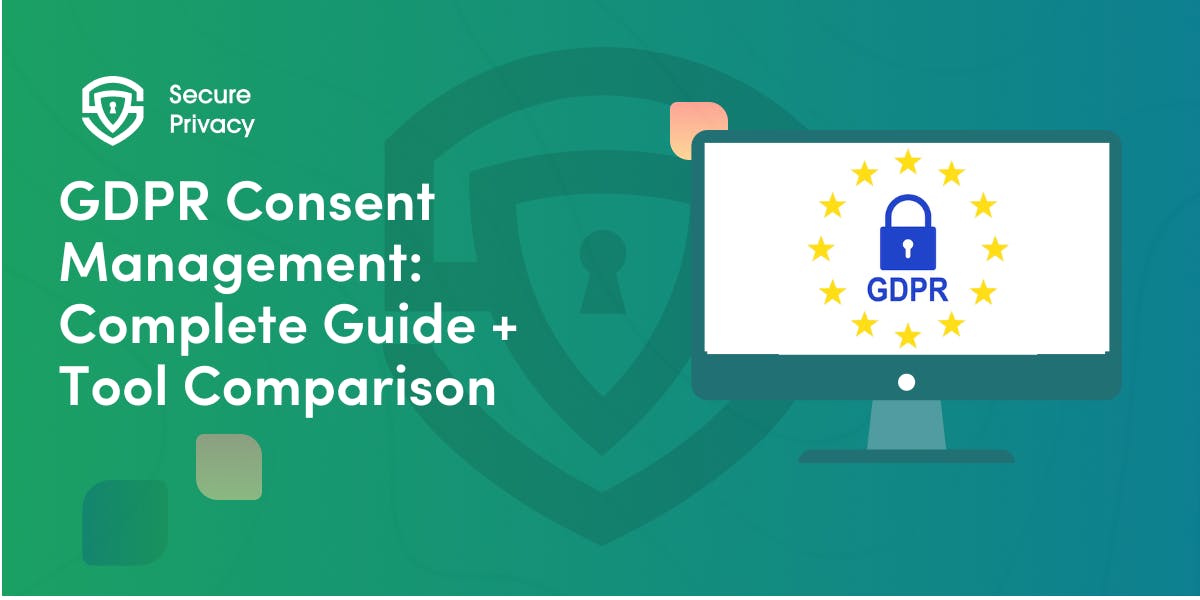Mastering Privacy by Design: A Step-by-Step Implementation Guide (2026-Ready)
Your development team just launched a new feature. Two weeks later, your legal team discovered it collects personal data without proper consent mechanisms. Your privacy officer wasn't consulted during design. Now you're facing a costly retrofit, delayed launch, and potential regulatory scrutiny — all because privacy was an afterthought rather than a foundational principle.
Privacy by Design (PbD) transforms this scenario by embedding privacy protection into system architecture from inception rather than bolting it on after development. Organizations implementing systematic PbD approaches report reduced data breach costs averaging $4.88 million compared to higher incident costs, enhanced customer trust driving 15% increases in privacy-conscious customer acquisition, and simplified compliance across GDPR, CCPA, and emerging global frameworks.
This guide provides a practical roadmap for integrating Privacy by Design principles into your organization's DNA, with actionable steps, real-world implementation strategies, and proven approaches for overcoming common obstacles.

Prioritizing user privacy is essential. Secure Privacy's free Privacy by Design Checklist helps you integrate privacy considerations into your development and data management processes.
What Is Privacy by Design?
Privacy by Design represents the systematic integration of privacy protection measures into the foundational architecture of systems, products, and organizational processes from their inception. Formalized by Dr. Ann Cavoukian in the 1990s and enshrined in GDPR Article 25, PbD transforms privacy from a compliance afterthought into a core operational principle that shapes how organizations build technology and process data.
The approach rests on a simple but profound premise: it's far more effective and cost-efficient to build privacy protections into systems during initial design than to retrofit them after deployment. This proactive methodology reduces technical debt, minimizes compliance risk, and creates sustainable privacy practices that scale with organizational growth.
Why Privacy by Design matters now: Regulatory frameworks worldwide mandate PbD through provisions like GDPR Article 25 (Data Protection by Design and by Default), which requires controllers to implement appropriate technical and organizational measures during both system design and processing operations. Over 140 countries now have comprehensive privacy legislation, creating unified global pressure for systematic PbD adoption.
Beyond regulatory compliance, PbD delivers measurable business value. The Privacy Enhancing Technologies market—integral to PbD implementation—is projected to reach $28.4 billion by 2034, growing at 24.5% CAGR from $3.17 billion in 2024. This growth reflects recognition that privacy protection creates competitive advantages through enhanced customer trust, reduced regulatory risk, and innovation catalyst effects.
The 7 Foundational Principles of Privacy by Design
Dr. Cavoukian established seven principles that guide practical PbD implementation across diverse organizational contexts.
1. Proactive Not Reactive; Preventative Not Remedial
Anticipate and prevent privacy invasive events before they occur rather than waiting for breaches to happen and then responding. This requires systematic threat modeling during design phases, privacy impact assessments before system deployment, and continuous monitoring for emerging risks.
Organizations practicing proactive privacy identify potential issues during development when remediation costs pennies per line of code, rather than during production when fixes cost dollars per line plus potential regulatory penalties and reputation damage.
2. Privacy as the Default Setting
Privacy protection must be automatic — users shouldn't need to take action to protect their data. Systems should default to maximum privacy settings, requiring explicit user action to reduce protections rather than forcing users to find and enable privacy controls.
This principle manifests in design choices like default opt-out from non-essential data collection, automatic data minimization collecting only information necessary for stated purposes, privacy-protective default configurations in system settings, and automatic deletion when retention periods expire.
3. Privacy Embedded into Design
Privacy must be integral to system architecture and business practices, not an add-on feature. This requires embedding privacy considerations into software development lifecycles, integrating privacy reviews into product development gates, making privacy requirements part of technical specifications, and treating privacy as a core functional requirement equal to performance and security.
4. Full Functionality – Positive-Sum, Not Zero-Sum
Privacy protection and business functionality aren't mutually exclusive—well-designed systems deliver both without compromise. Organizations should avoid false dichotomies between privacy and usability, innovation and protection, or security and user experience. Modern privacy-enhancing technologies enable data utilization while maintaining strong privacy protection.
5. End-to-End Security – Full Lifecycle Protection
Privacy protection must extend throughout data's entire lifecycle from collection through retention to secure destruction. This encompasses secure data transmission using encryption, protected storage with access controls, secure processing through privacy-preserving computation, and verified destruction with audit trails confirming deletion.
6. Visibility and Transparency – Keep it Open
Organizations must be transparent about data practices, providing clear information about what data is collected, why it's collected, how it's used, who receives access, and how long it's retained. Transparency builds trust and enables informed user decisions about privacy preferences.
7. Respect for User Privacy – Keep it User-Centric
Systems should empower users with control over their personal data through easily accessible privacy settings, clear consent mechanisms, straightforward data access and portability, and simple deletion requests. User-centric design places individuals at the center of privacy protection rather than treating privacy as purely a compliance obligation.
Steps to Implement Privacy by Design
Successful PbD implementation requires systematic integration throughout organizational operations and product development processes.
Step 1: Conduct Privacy Impact Assessments
Privacy Impact Assessments form the foundation of PbD by identifying privacy risks before system deployment. Effective PIAs involve describing the system and data flows comprehensively, identifying personal data types and processing purposes, assessing necessity and proportionality of data collection, evaluating privacy risks to individuals, and documenting mitigation measures and residual risks.
Conduct PIAs early in development when design modifications are inexpensive, update PIAs iteratively as systems evolve, involve cross-functional teams including legal, security, and business stakeholders, and document decisions and trade-offs for accountability.
Step 2: Select Appropriate Regulatory Frameworks
Identify applicable privacy regulations based on your geographic reach, customer locations, and industry sector. Key frameworks include GDPR for EU residents requiring consent, data minimization, and data subject rights, CCPA/CPRA for California residents mandating disclosure and consumer rights, sector-specific regulations like HIPAA (healthcare) or GLBA (financial services), and emerging legislation in states and countries worldwide.
Map framework requirements to technical controls, ensuring implementations satisfy multiple regulatory regimes where your organization operates across jurisdictions.
Step 3: Integrate Privacy into Software Development Lifecycle
Embed privacy considerations into every SDLC phase from requirements through maintenance.
Requirements Phase: Define privacy requirements alongside functional specifications, identify applicable regulations and standards, conduct preliminary privacy threat modeling, and establish privacy acceptance criteria.
Design Phase: Perform detailed Privacy Impact Assessments, implement privacy-by-default configurations, design data minimization into collection processes, and specify encryption and access control requirements.
Development Phase: Follow secure coding practices preventing common vulnerabilities, implement automated privacy testing, conduct code reviews focusing on privacy controls, and use privacy-preserving libraries and frameworks.
Testing Phase: Validate privacy controls function as designed, test data deletion and anonymization capabilities, verify consent mechanisms work correctly, and conduct penetration testing on privacy controls.
Deployment and Maintenance: Monitor systems for privacy control effectiveness, update PIAs when functionality changes, respond promptly to data subject requests, and maintain audit logs for compliance demonstration.
Step 4: Establish Organizational Measures and Policies
Technical controls alone don't create effective PbD — organizational culture and governance structures provide essential support.
Privacy Governance: Designate Data Protection Officers or privacy champions, establish cross-functional privacy councils, create clear escalation paths for privacy issues, and secure executive sponsorship for privacy initiatives.
Policy Development: Document data handling procedures comprehensively, establish retention and deletion schedules, create incident response plans, and define vendor management requirements.
Training Programs: Provide privacy awareness training for all staff, deliver role-specific privacy training for developers and product managers, offer regular updates on regulatory changes, and conduct simulated privacy incidents for practice.
Step 5: Monitor and Review Privacy Practices Regularly
PbD requires continuous improvement rather than one-time implementation. Establish regular privacy audits assessing control effectiveness, conduct periodic risk assessments as business evolves, review and update PIAs when systems change, monitor regulatory developments requiring practice updates, and track privacy metrics like data subject request response times and breach incident rates.
Challenges in Implementing Privacy by Design
Organizations encounter predictable obstacles when implementing PbD that require strategic approaches to overcome.
Cultural Resistance
Privacy initiatives often face resistance from stakeholders viewing privacy as compliance burden rather than business enabler. Development teams may resist process changes they perceive as slowing innovation. Business units might prioritize feature velocity over privacy considerations.
Overcoming resistance requires:
- Securing visible executive sponsorship communicating privacy importance
- Demonstrating privacy ROI through reduced breach costs and enhanced trust
- Integrating privacy seamlessly into existing workflows
- Celebrating privacy wins publicly to build momentum.
Resource Constraints
Organizations frequently cite limited budget, staff, and time as barriers to PbD implementation. Privacy expertise shortages compound challenges—65% of corporate compliance professionals identify skilled personnel shortage as critical challenge.
Addressing constraints through: Phased implementation starting with high-impact areas, leveraging privacy automation tools reducing manual effort, building internal privacy expertise through training, and partnering with external privacy specialists for complex projects.
Balancing Privacy with Business Objectives
Organizations struggle to balance privacy protection with legitimate business needs for data utilization, innovation requiring experimentation with new data uses, and competitive pressure to match or exceed competitor data practices.
Achieve balance by:
- Applying Privacy Enhancing Technologies enabling data use while protecting privacy
- Conducting structured risk-benefit analyses for proposed data uses
- Exploring privacy-preserving alternatives to invasive practices
- Engaging stakeholders in collaborative problem-solving.
Case Studies: Successful Privacy by Design Implementation
Case Study: Global Financial Services Firm
A multinational bank implemented PbD across their digital banking platform serving 40 million customers. The implementation included automated PIAs integrated into development workflows, privacy-by-default account settings minimizing data collection, enhanced encryption for sensitive financial data, and streamlined data subject request processing.
Results: 60% reduction in PIA completion time through automation, 90% faster data subject request processing, zero privacy-related regulatory violations in 24 months post-implementation, and 25% increase in customer trust scores related to data protection.
Case Study: Healthcare Technology Startup
A health tech startup built PbD into their patient monitoring platform from inception rather than retrofitting privacy later. Implementation included comprehensive threat modeling during design phase, end-to-end encryption for health data transmission, granular consent management for data sharing, and automated de-identification for research data sets.
Results: Achieved HIPAA compliance 40% faster than industry average, obtained investment from privacy-focused venture capital firms, secured major hospital system contracts citing strong privacy as differentiator, and avoided costly post-launch privacy retrofits.
Best Practices for Sustained Privacy by Design Success
Start Early: Integrate privacy considerations from project inception when design flexibility is greatest and modification costs are lowest.
Make Privacy Everyone's Responsibility: While DPOs provide expertise and governance, effective PbD requires privacy consciousness across all roles from executives to developers.
Use Technology Wisely: Leverage Privacy Enhancing Technologies like differential privacy, homomorphic encryption, and federated learning to enable data utilization while maintaining protection.
Document Everything: Maintain comprehensive records of PIAs, privacy decisions, risk assessments, and control implementations for accountability and audit defense.
Iterate Continuously: Treat PbD as ongoing journey rather than destination, regularly reviewing and improving privacy practices as technology, regulations, and threats evolve.
Measure and Report: Track privacy metrics, report progress to leadership, and use data to demonstrate PbD value and identify improvement opportunities.
Privacy by Design Checklist
✅ Conduct Privacy Impact Assessment before deployment
✅ Implement privacy-by-default configurations
✅ Embed privacy requirements in technical specifications
✅ Apply data minimization to collection processes
✅ Encrypt sensitive data in transit and at rest
✅ Implement robust access controls
✅ Provide transparent privacy notices
✅ Enable easy consent management
✅ Facilitate data subject rights (access, deletion, portability)
✅ Establish secure data deletion processes
✅ Train staff on privacy responsibilities
✅ Document privacy decisions and trade-offs
✅ Conduct regular privacy audits
✅ Monitor for privacy control effectiveness
✅ Update practices as regulations evolve
Transform Your Organization with Privacy by Design
Privacy by Design has evolved from theoretical framework to business imperative, driven by regulatory mandates, customer expectations, and competitive dynamics in privacy-conscious markets. Organizations implementing systematic PbD approaches achieve measurable benefits including reduced breach costs, enhanced customer trust, simplified multi-jurisdiction compliance, and sustainable competitive advantages.
Success requires commitment beyond mere compliance checkbox completion—effective PbD demands cultural transformation treating privacy as core business value, systematic integration throughout product development, ongoing investment in privacy capabilities, and continuous improvement as technology and regulations evolve.
Secure Privacy supports organizations implementing Privacy by Design through our SOC 2-certified platform offering automated Privacy Impact Assessments, comprehensive data discovery and mapping, consent management infrastructure, and compliance monitoring across global frameworks.
Schedule a free consultation to discuss how Secure Privacy can support your Privacy by Design journey, or explore our privacy governance solutions to see how leading organizations embed privacy into their operations.
Your customers trust you with their most sensitive data. Honor that trust through Privacy by Design excellence.
Get Started For Free with the
#1 Cookie Consent Platform.
No credit card required

GDPR Consent Management: Complete Guide + Tool Comparison
Your website could be costing you €20 million. Every cookie that loads before user consent, every "accept all" button without an equally prominent reject option — these aren't minor oversights. They're violations that data protection authorities are actively hunting.
- Legal & News
- Data Protection

How to Design High-Performing Cookie Banners in 2026
“You're one click away from a €325 million fine”. That's what Google learned in September 2025 when French regulators hit them for cookie consent violations. The message is clear: cookie banner design in 2026 isn't about getting extra clicks anymore — it's about survival.
- Legal & News
- Data Protection

Privacy Governance for Small Businesses: Step-by-Step Guide
You're a 20-person company. A customer asks for their data. Your marketing team just added a new tracking pixel. Your CRM vendor updated their terms. And you just realized you might need to comply with GDPR, CCPA, or both.
- Legal & News
- Data Protection
